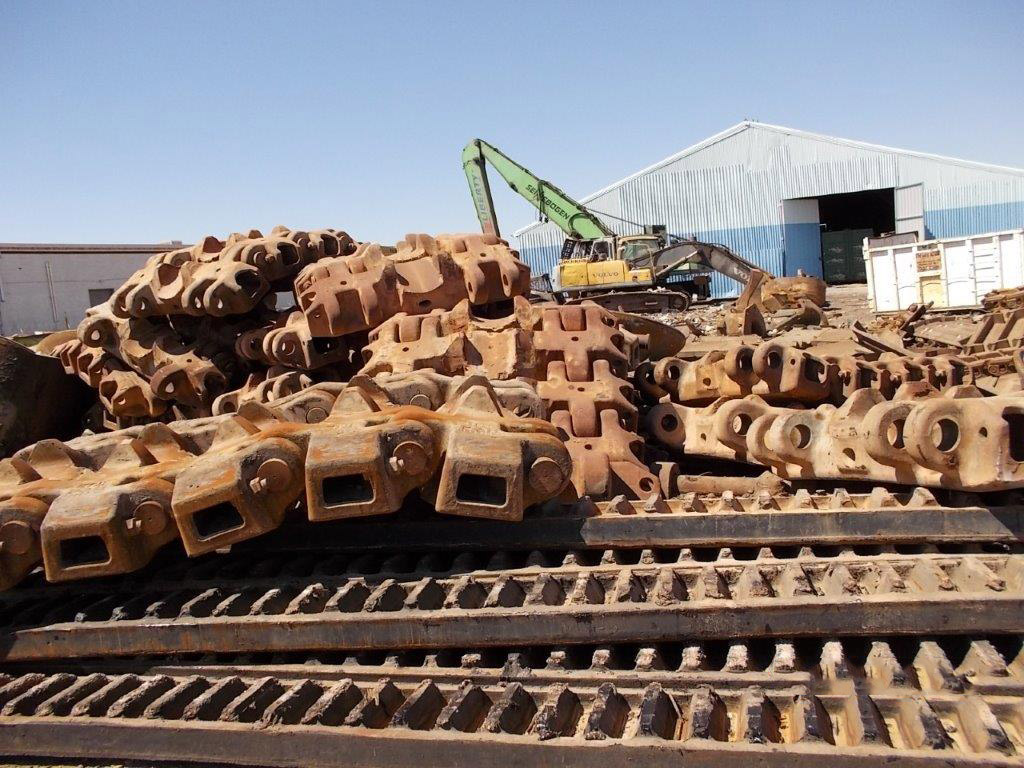Ferrous metals, characterized by their iron content, are renowned for their robustness. Examples include steel, stainless steel, carbon steel, and cast iron. These metals play a crucial role in architectural and industrial applications, contributing to the construction of structures like skyscrapers, bridges, vehicles, and railroads. The magnetic properties of ferrous metals make them integral components in appliances and engines. While ferrous metals typically have a high carbon content that makes them susceptible to rust, exceptions like stainless steel (due to chromium) and wrought iron (due to its high pure iron content) exhibit enhanced corrosion resistance.

Iron and steel scrap, denoted as Shredded Steel Scrap 211, is a uniform mixture that has undergone magnetic separation. This scrap material is derived from automobiles and consists of unprepared No. 1 and No. 2 steel, along with miscellaneous baling and sheet scrap. The average density of this scrap is approximately 70 pounds per cubic foot.

Heavy Melting Steel (HMS), also known as heavy melting scrap, refers to recyclable steel and wrought iron. It can be classified into two main categories: HMS1 and HMS2. HMS1 excludes galvanized and blackened steel, while HMS2 includes them. Both HMS1 and HMS2 consist solely of obsolete scrap, which refers to iron and steel recovered from items that have been demolished or dismantled at the end of their lifespan.

There are two primary categories of scrap, namely Code 231 and Code 232, in the realm of plate and structure.
Code 231:
This category encompasses cut structural and plate scrap measuring 5 feet and under. It includes clean open hearth steel plates, structural shapes, crop ends, shearings, or broken steel tires. The specified dimensions are less than 1/4 inch in thickness, not exceeding 5 feet in length and 18 inches in width. It is crucial that the phosphorus/sulphur content does not surpass 0.05%.
Code 232:
Similar to Code 231, Code 232 covers cut structural and plate scrap with dimensions of 5 feet and under. It consists of clean open hearth steel plates, structural shapes, crop ends, shearings, or broken steel tires. The specified dimensions, in this case, are less than 1/4 inch in thickness, not surpassing 5 feet in length and 24 inches in width. It is imperative to adhere to a phosphorus/sulphur content that does not exceed 0.05%.

Busheling bundles are a commonly traded variant of steel scrap, comprising sheet clips and stampings derived from metal production. The term “bushel” originated during the Cold War era, marked by the widespread scattering of metal parts across land and sea. Busheling involves the procedure of heating iron scrap and shaping it into a cohesive block within a furnace. The primary constituents include new factory sheet clippings, drops, stampings, clean wrought iron, and soft steel pipes.

Cast iron scrap refers to iron that is designated for remelting and reuse. This material is typically sourced from homeowners who collect and deliver the scrap to scrapyards for additional processing. Iron scrap is commonly obtained in large quantities from various sources such as construction sites, residences, and infrastructure projects.

Scrap components originating from vehicles equipped with disc brakes include rotors and drums. Whether it’s a car, train, or bike, these vehicles are equipped with braking systems made from cast iron. When a vehicle reaches the end of its life cycle and is sent for scrap, these brake components are carefully extracted. If they are still in good condition, they are forwarded to a refurbishing plant for restoration. However, if these parts exhibit signs of wear and tear, they are directed to undergo the remelting process for recycling.

Manganese Steel Scrap possesses exceptional qualities such as durability and robustness, attributed to its production using high-grade manganese steel. Rigorous quality checks are conducted on the steel scraps, adhering to industry-defined parameters, before being dispatched to the factory for recycling. Characterized by rust resistance and superior strength, this steel type can be effectively reused, ensuring sustainable practices in manufacturing.
Cast iron scrap refers to iron that is designated for remelting and reuse. This material is typically sourced from homeowners who collect and deliver the scrap to scrapyards for additional processing. Iron scrap is commonly obtained in large quantities from various sources such as construction sites, residences, and infrastructure projects.

Our steel meets the highest standards, so your project stands strong, guaranteed.
We're invested in your success, working alongside you to turn dreams into reality.
3. We believe in building a greener future, with eco-friendly practices and resource efficiency.